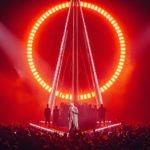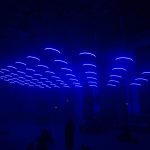Seek the wisdom that will untie your knot, see the path that demands your whole being.
Leave that which is not, but appears to be, seek that which is, but is not apparent.
– Rumi
When I was in junior high and high school, my friends and I used to build our own surfboards in our backyards and garages. We would buy the foam blanks and shape them with sanders. In a matter of minutes, we would be covered from head to toe in white foam powder, but in a few hours a beautiful shape would emerge. Then we would put designs on them and cover them with fiberglass cloth and resin. When the resin hardened, we would sand them smooth and put a few more coats of resin on, and when it dried, we’d have a brand new “stick.”
My favorite part was hitchhiking to the beach with a brand-new board. I thought I was soooo cool, right up to the point where I hit the water and paddled out. Then I sucked. I was the worst surfer in on the Coastal Bend. My older brother, on the other hand, was a surf legend in my own mind. He was a shredder. The secret, he said, is to look to the horizon. When the right wave comes along, if you paddle as fast as you can, it will take you where you want to go.
Lately, the lighting business is all about media servers and LEDs. I’ve been working on catching a few LED waves of late, but alas, I suck at it. Last year I got a call from a client who asked me to design the lighting for a gymnasium. He specifically asked about using LED fixtures because, like me, he had read about how efficient they are and he knew they have a long life. Having recently returned from LDI 2004, one product in particular popped into my head. I had seen an LED high-bay fixture that was very impressive. It was lying on a table pointing straight up and it easily lit the ceiling of the Sands Expo and Convention Center despite all the ambient light. I had no idea how much it cost, but I had a decent budget to work with. So I called the manufacturer and inquired about the luminaire. As it turns out, there was no luminaire, only a proof-of-concept fixture they prototyped to illustrate their core product, which was a substrate with a matrix of RGB LEDs. Very clever, but it didn’t help me. In the end, we ended up using some high-bay fixtures with compact fluorescent sources, which worked well.
About a year later, I got a call from a client who wanted to relight his recording studio because they were having problems with filament sing. Having recently returned from LDI (are you starting to see a pattern here?), I was aware of some white LED replacements for MR-16s. I subsequently gathered the photometric data and did some rough calculations. Much to my surprise, I found that it would take a lot of LED modules to produce the same amount of light as a single 71-watt MR- 16. I’m talking a difference of magnitude on the order of 10, like a misplaced decimal point. Needless to say, I didn’t recommend them.
LEDs are great as luminance sources, like automotive taillights and video walls, and for task lighting. But when will they be effective for general illumination, like automotive headlights and stage wash? When will they move from the back of the car to the front of the car or from back wall to the Front of House truss?
According to Keith Scott of Lumileds, a manufacturer of high-powered LEDs, it could happen in five to 10 years. Haitz’s law says that LEDs will double in brightness every 16 to 24 months, which has held true for the last 45 years. Does it still hold true today?
“It does hold true today,” Scott says. “In fact, we’re a little bit ahead of the curve.”
But it’s getting more difficult to come by those gains. One of the toughest issues is the management of heat. “Heat is the death of LEDs,” he says. Lumileds has just introduced the Luxeon K2, which set a record for LED light output by allowing higher junction temperatures. At 140 lumens in 6500K white light, the output of this LED is 15% to 30% higher than its closest rival.
With LEDs offering about 40 lumens per watt, the efficacy of an LED lighting system is almost as high as a compact fluorescent (CF) or a metal halide source. And as the efficacy of LEDs increases, perhaps as high as 200 lumens per watt, LED lighting systems will surpass CF and metal halide for overall efficiency.
“I think what we’ll see is that it will cap off at about 80 to 120 lumens per watt; that’s my wild guess as a marketing guy,” says Scott. But first, he says, the industry has to build the infrastructure to support that in terms of optics, drivers and heat sinks. “That’s coming along quite well; we’ve done a lot of work over the last four years doing that.”
Another piece to the puzzle is that they have to be accepted by the distribution channels. “Most of the lighting in North America is driven through a distributor network that’s been around for 100 years and being serviced by the big four: Acuity, Cooper, Genlyte and Lithonia. It’s taking some time for these guys to come onboard and accept the technology. They’re slower to adapt and it’s up to us as the LED manufacturers to work with them. There are four characteristics of LED white light that we in the LED industry need to continue working on. First, the market continues to ask for more lumens and more lumens-per-watt. Next, many lighting people continue to ask for traditional lighting color temperatures, like 2700K, 3000K, 3500K, 4500K; these need to be perfected by the LED manufacturers. The question of CRI is another one. Some LEDs have great CRI and others are less. This becomes more of a qualitative issue. What is LED light and what does it mean in terms of visual perception? For example, the cool white light of LEDs, according to the studies done by LRC (the Lighting Research Center at Rensselaer Polytechnic Institute) and others, is a bit more acceptable than the cool white light of compact fluorescent or other products. So there’s this paradigm out there that we’ll have to work through as well. Finally, white LEDs are manufactured to a wide color temperature distribution, typically several thousand K. This is new, different and generally unacceptable in lighting. Most people want to see the same shade of white when multiple luminaries are lighted in the same room. Those are four great big things in front of us—once we begin to work through them, it will begin to drive the acceptance forward.”
What’s the bottom line as far as when LEDs will compete with other sources for general illumination? “I would hazard a guess of five to 10 years,” Scott says. “What I would say is that every major and mid-sized lighting manufacturer today is on board and actively working on it. Four years ago, it was, ‘Well, it’s interesting stuff, but we’ll wait and see.’ Two years ago, it was, ‘Wow, it’s interesting stuff; we’re going to have to get started soon.’ And then last year, it was, ‘My God, we’ve got to get going now.’ We’re seeing a whole lot of interest out there in the general lighting market in white light. I’m highly encouraged.”
Until then, keep watching the horizon. The forecast is for some big surf to be heading our way.
When the author is not at the beach, he can be reached at rcadena@plsn.com.


